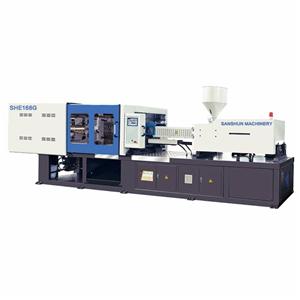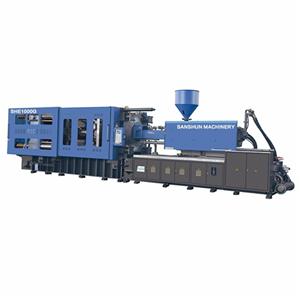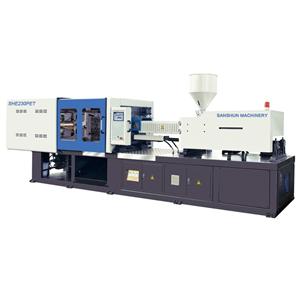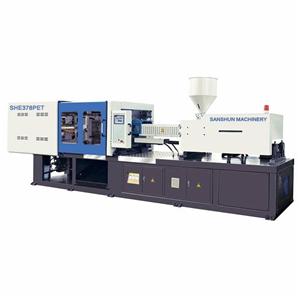- Home
- >
- News & Resources
- >
- Our Blog
- >
- What should I do if the injection molded part is cracked?

The residual stress is too high. When the residual stress in the plastic part is higher than the elastic limit of the resin, cracks and cracks occur on the surface of the plastic part.
During injection molding, the molecular arrangement of the polymer melt causes the orientation of the molecular chain under the action of external force. When the polymer chain is forced from a natural stable state to another orientation state, it is finally frozen in the mold. When it is inside, the cooled plastic parts will generate residual stress.
At the same time, the molten material in the cold mold has a large temperature difference, and quickly changes from a viscous flow state to a glassy state. The oriented macromolecules are frozen as soon as the initial stable state is restored, and a part of the internal stress remains on the surface of the plastic part.
In general, cracks and cracks caused by residual stress are most likely to occur near the gate because the molding pressure at the gate is higher than other parts, especially when the main channel is a direct gate.
Further, when the wall thickness of the plastic part is not uniform and the cooling rate of the melt is not uniform, since the shrinkage amount of the thick portion is different, the former is stretched by the latter, and residual stress is also generated. Since residual stress is a major cause of cracking and cracking of plastic parts, it is possible to prevent cracks and cracks in plastic parts by reducing residual stress. The main method of reducing residual stress is to improve the structural form of the casting system and to adjust the molding conditions of the plastic parts.
In the mold design and production, you can use the direct gate with the least pressure loss and can withstand higher injection pressure. You can change the forward gate to multiple pin gates or side gates, and reduce the gate. diameter. When designing the side gate, a tab gate form which can remove the cracked portion after molding can be used.
For example, raw materials such as polycarbonate, polyvinyl chloride, and polyphenylene ether have poor melt flow properties, and need to be injection molded under high pressure conditions, and cracks are easily generated at the gate. If tabs or side gates are used, molding can be performed. After that, the crack portion of the tab portion is removed. In addition, the use of annular ribs around the gate can also reduce cracks at the gate.
In terms of process operation, reducing the residual stress by reducing the injection pressure is the easiest method because the injection pressure is proportional to the residual stress. If the crack on the surface of the plastic part is black, indicating that the injection pressure is too high or the amount of feed is too small, the injection pressure should be appropriately reduced or the supply amount should be increased. When molding under conditions of low material temperature and low mold temperature, in order to fill the cavity, a high injection pressure is inevitable, resulting in a large amount of stress remaining in the plastic part.
In this regard, the temperature of the barrel and the mold should be appropriately increased, the temperature difference between the melt and the mold should be reduced, and the cooling time and speed of the in-mold preform should be controlled, so that the oriented molecular chain has a long recovery time.
In addition, under the premise of ensuring insufficient feeding and not causing shrinkage and depression of the plastic part, the holding time can be appropriately shortened, because the holding time is too long and cracks are easily generated due to residual stress.
External forces cause residual stress concentration.
Before the demoulding, if the cross-sectional area of the demoulding ejection mechanism is too small or the number of the ejector pins is insufficient, the position of the ejector pin is unreasonable or the installation is inclined, the balance is poor, and the draft of the mold is insufficient, and the ejection is insufficient. If the resistance is too large, stress will be concentrated due to external force, causing cracks and cracks on the surface of the plastic part.
In general, such failures always occur around the ram. After such a fault occurs, the ejector unit should be carefully checked and calibrated. The ejector pin is placed at the portion where the mold release resistance is the greatest, such as bulging, reinforcing ribs, and the like.
If the number of ejector pins is set and it is impossible to expand due to the condition of the ejector area, a small-area multi-rod can be used.
If the draft angle of the mold cavity is insufficient, the surface of the plastic part may also be scratched to form a wrinkle pattern. When selecting the draft angle, the shrinkage of the molding material and the structural setting of the ejection system must be considered. In general, the draft angle should be greater than 0.85%, and the draft angle of the small plastic part is 0.1 to 0.5%. The large plastic parts have a draft angle of up to 2.5%.
There is a difference in thermal expansion coefficient between molding materials and metal inserts
Because the thermal expansion coefficient of thermoplastics is 9-11 times larger than steel, and 6 times larger than aluminum. Therefore, the metal insert in the plastic part hinders the overall shrinkage of the plastic part, and the resulting tensile stress is large, and a large amount of residual stress gathers around the insert to cause cracks on the surface of the plastic part. Thus, the metal insert should be preheated, especially when the crack on the surface of the plastic part occurs just after the start-up, mostly due to the low temperature of the insert.
In addition, in the selection of the material of the insert, the material whose expansion coefficient is close to the resin property should be used as much as possible. For example, the use of zinc, aluminum and other light metal materials to make inserts is superior to steel.
When selecting the molding material, high-molecular-weight resin should also be used as much as possible. If low-molecular-weight molding materials must be used, the thickness of the plastic around the insert should be designed to be thicker, for polyethylene, polycarbonate, polyamide, acetic acid. For cellulosic plastics, the thickness of the plastic around the insert should be at least half the diameter of the insert; for polystyrene, metal inserts are generally not suitable.
Inappropriate or impure raw materials
Different raw materials have different sensitivity to residual stress. Generally, amorphous resin is more likely to cause residual stress than cracked crystal resin. For water-absorbent resin and resin with more recycled materials, the water-absorbent resin will decompose after heating. The smaller residual stress will cause brittle fracture, while the resin with higher regrind content has more impurities, higher volatile content, lower strength of the material, and stress cracking.
Practice has shown that low-viscosity loose resin is not prone to cracking. Therefore, in the production process, suitable molding materials should be selected in combination with specific conditions.
During the operation, the release agent is also a foreign matter to the melt. If the dosage is improper, it will cause cracks, and the amount should be minimized.
In addition, when the injection molding machine needs to replace the raw material variety due to production, it is necessary to clean the remaining materials in the hopper feeder and the dryer, and drain the remaining material in the cylinder.
Poor design of plastic parts
The sharp corners and notches in the shape of the plastic part are most likely to cause stress concentration, which causes cracks and cracks on the surface of the plastic part. Therefore, the outer and inner angles in the shape of the plastic part should be as large as possible with the largest radius. Experiments show that the optimal transition arc radius is the ratio of the radius of the arc to the wall thickness at the corner: 1:1.7, that is, the radius of the arc at the corner is 0.6 times the wall thickness.
When designing the shape structure of the plastic part, it is still necessary to use a minimum transition radius of 0.5 mm to make a small arc for the part that must be designed as a sharp corner and a sharp edge, which can extend the life of the mold.
The crack on the mold is reproduced on the surface of the plastic part
In the injection molding process, since the mold is repeatedly subjected to the injection pressure, the edge portion having a sharp acute angle in the cavity may generate fatigue cracks, especially in the vicinity of the cooling hole.
When the mold is in contact with the nozzle, the bottom of the mold is pressed. If the positioning ring hole of the mold is large or the bottom wall is thin, fatigue cracks are also generated on the surface of the mold cavity.
When cracks on the surface of the mold cavity are reproduced on the surface of the plastic part, cracks generated on the surface of the plastic part always appear in the same shape continuously in the same portion. Immediately after the occurrence of such a crack, the crack at the surface of the cavity corresponding to the crack should be inspected. If it is a crack due to the re-enactment, the mold should be repaired by machining.







